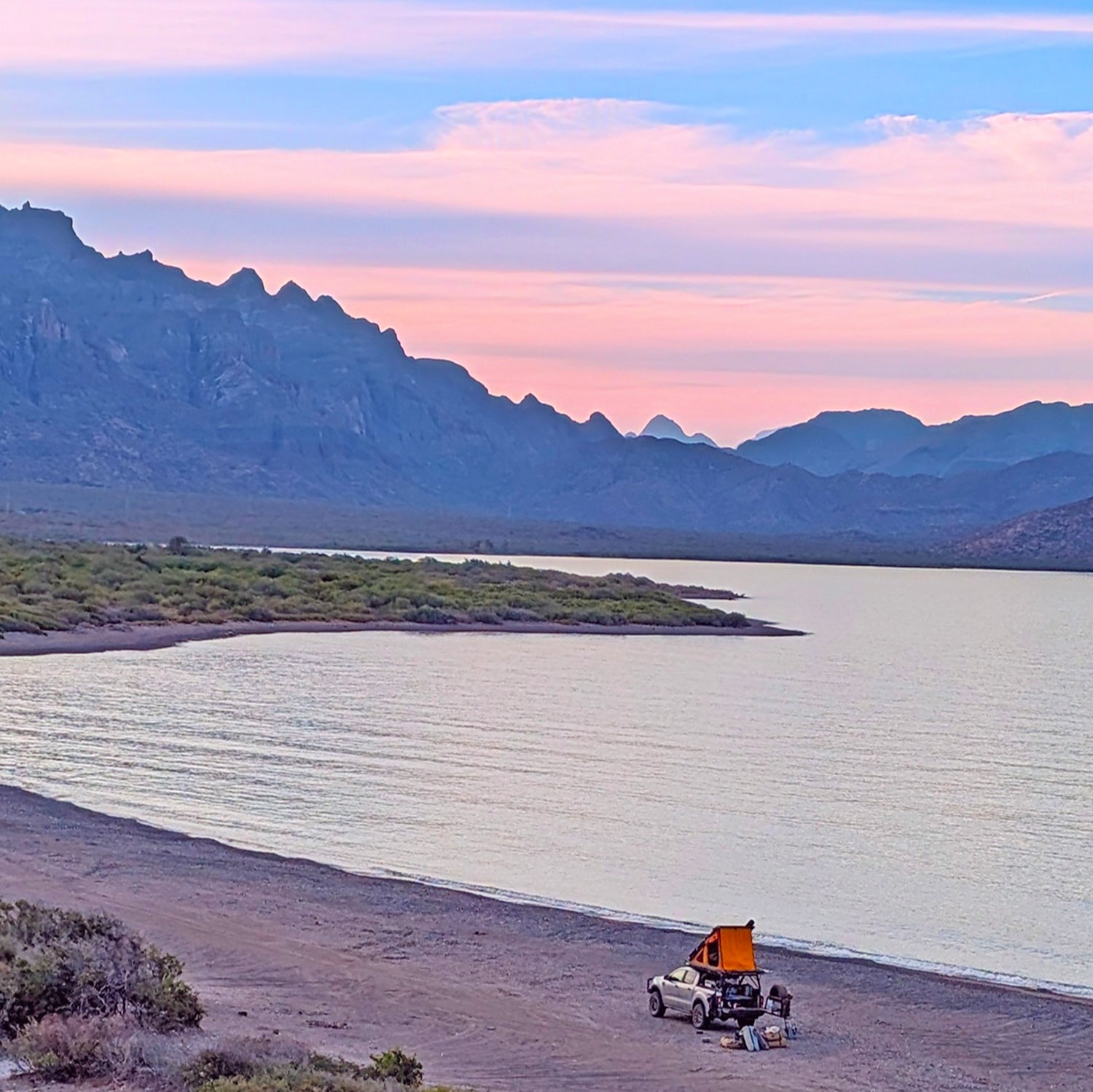Three months and seven thousand miles. Mountains, deserts, and beaches. Plenty of nights in camp, paired with hotels and rental houses in far-flung destinations. This is the kind of overlanding trip that justifies building a custom 4×4—one that my wife and I spent years planning.
What went right? What went wrong? What would we do differently? I’ve had a few months to reflect and try to condense everything I learned into something that should be useful for most people planning any adventurous road trip.
I Encountered Most Hazards On-Road
The thing about off-road obstacles and mishaps is that they’re relatively easy to plan for. You’re driving slower, you’re unlikely to see traffic, and all your equipment is purpose-built to handle stuff like big rocks or deep sand. Plus, you tend to be paying attention when things get interesting.
Compare that to driving on a mundane highway here in the United States. At 70 or 80 miles per hour, you’re traveling well beyond your vehicle’s ability to save your life in any sort of crash (survival at highway speeds relies on before you hit anything).
And potential hazards can appear without notice, their risk amplified if you’re not at attention. That danger increases again with any overlanding-oriented modifications like big tires, lifted suspension, or just loading down your vehicle with lots of weight—all of which make it more difficult to slow down your vehicle.
In all those thousands of miles, I didn’t once find anything off-road that worried me. But driving at night in heavy rain and high winds? That was scary. At one point, we encountered an off-camber blind corner on a mountain road that had recently had its guard rail wiped out by an 18-wheeler plowing through it, adding to the pile of wrecks hundreds of feet below the edge. A few years ago, driving back north through Ensenada, a couch flew out of a pickup bed just in front of me, necessitating an emergency avoidance maneuver worthy of a Michael Bay movie.
These incidents provide a good reminder that, while it’s easy to chase overlanding capability by adding modifications and extra gear to your rig, you must prioritize safe handling and short braking distances. Keeping your truck’s center of gravity low, staying within in its Gross Vehicle Weight Rating (GVWR, found on a sticker in every vehicle’s driver side door jamb), and ensuring stuff you carry can’t shift isn’t just the way to minimize danger, but it’ll also keep fuel ranges reasonable and make driving more enjoyable.
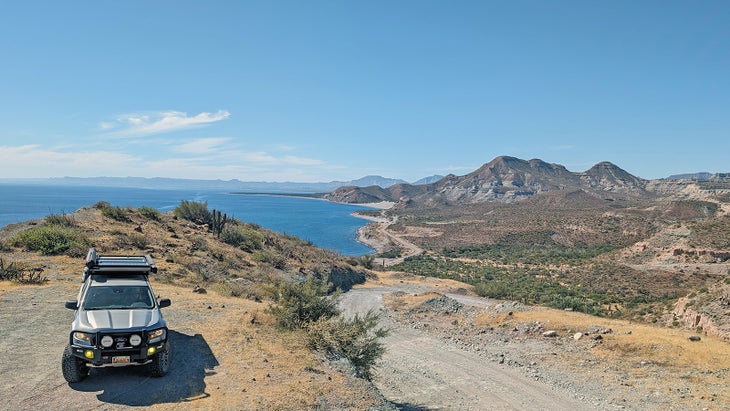
Tire Technology Is Always Improving
I commonly encounter friends and colleagues who found a tire they liked a decade or more ago, and continue to use only that tire out of habit—or superstition. Problem is, they’re likely costing themselves money at the fuel pump, performance off-road, and even safety on-road.
Given the overlanding-leaning nature of this trip, I set out in advance to replace my usual all-terrain tires with something a little more capable on sand and rocks. The easy way to think about tire performance is as a simple ratio. All-terrains represent a 60:40 compromised between pavement and dirt.
The next upgrade towards overlanding performance from there has always been a mud-terrain, which typically stand around 20:80 or 30:70 road-to-off-road. You can hear that difference from the MT’s big lugs catching air and generating tons of noise, and feel it as they easily lose grip in any sort of precipitation.
Enter the rugged-terrain tire, a new category that’s attempting to bridge that gap between AT and MT with performance that’s closer to 40:60 on-road to off-road. Something that’s still safe in inclement weather, but which should feel significantly more sure-footed on loose surfaces. For this trip, I ran a set of the new , in the same size and weight capacity as my old ATs. They proved to be stable during the two atmospheric rivers we drove though on the way down, and I can detect no noticeable difference in noise levels or fuel economy from the all-terrain tire.
Importantly, they provided vastly more flotation on deep sand, and grip on loose rocks. They were good enough across everything we encountered during the trip that I feel comfortable recommending them to most adventurous drivers. Rugged-terrain tires are an all-round option for any condition other than winter.
Even if those aren’t right for you, it’s worth taking the time to research the latest models from the major tire brands any time you’re shopping for a new set. Tires are a competitive market, and innovations like rubber compounds and manufacturing techniques are always boosting traction, and reducing weight. You’ll benefit from both factors every time you drive. The newest tires are almost always the best tires.
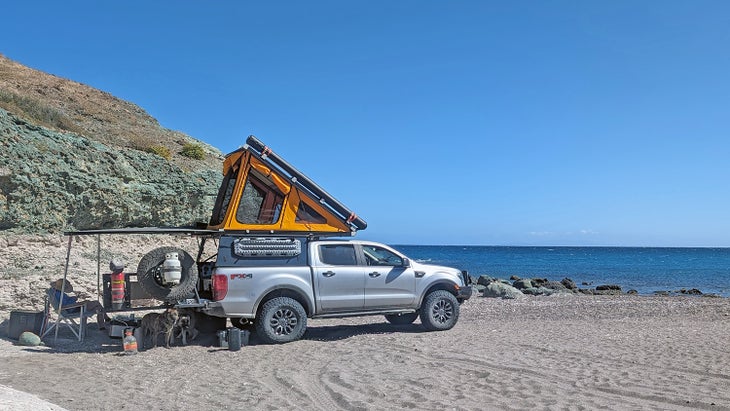
My Tips for Overland Gear Organization
Between spare parts and tools for the truck, food and medical supplies for our three dogs, human food, camping gear and fishing equipment, plus clothes for conditions ranging from Montana in February to fancy restaurants in Mexico, and the Starlink satellite Internet and the electrical system needed to power it, we took along an unbelievable amount of crap. And it all had to fit in a Ford Ranger, along with two humans and 300 pounds of dog.
But the hard part wasn’t jamming all that into the truck, it was fitting it all in such a manner that it remained accessible without unpacking absolutely everything. My solution involves a , which doubles secure storage space in the bed and gives me a place to attach accessories like a 270 awning and solar panels, a Goose Gear seat delete system that adds both room for the dogs in what used to be the rear seat area plus storage for small essentials, Decked’s new mega-drawer system in the truck bed, and a swingout rear tire carrier that also adds a place for bulky items like my five-pound propane tank and 15-pound compressed CO2 canister.
That’s a lot of effort and cost right there, but the end result is an easy, intuitive ability to access all our stuff.
One afternoon, I pulled out onto a beach to take one of Virginia’s three moms snorkeling, and encountered much deeper, softer sand than I was anticipating. She’d never really been overlanding before, and despite my reassurances immediately feared the worst—getting totally stranded in the middle of nowhere in a foreign country. Thankfully, I was able to access my air down tool and Maxtrax without even opening the truck up, and use them to get us back onto firm ground in just a minute or two. That, plus a Pacifico, had her feeling better about her daughter’s decisions soon after.
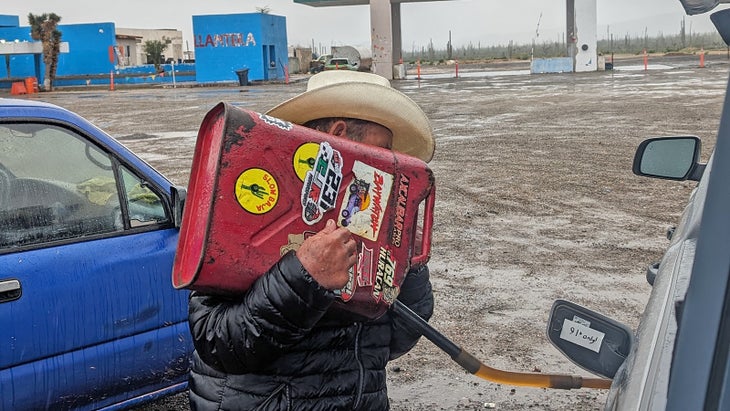
How to Maintain Your Rig
When we left for the trip, my truck only had 19,000 miles on it. Still, I took the time to fit those new tires (and get the alignment checked when they went on), do an oil change, fit a new air filter, check and top up all the other fluids, replace all four headlamp bulbs, fit new wiper blades, and grease anything with a nipple.
Necessary? Probably not. Worth it? The only things that went wrong on the trip (truck wise) were a broken sway bar end link and one of my aftermarket fog lights loosened on its mount, pivoting out of alignment. I fixed both, easily.
Compare that to the cost of having a more significant mechanical issue in some far-flung location. A tow—if you can find one—costs hundreds of dollars, maybe thousands if you’re far off-road. A mechanic or auto parts store in a small town may not have the parts or expertise you need to make your repair. And a mechanical fault in anything related to steering or braking can be seriously dangerous. All that is easily avoided with a little time and money up front.
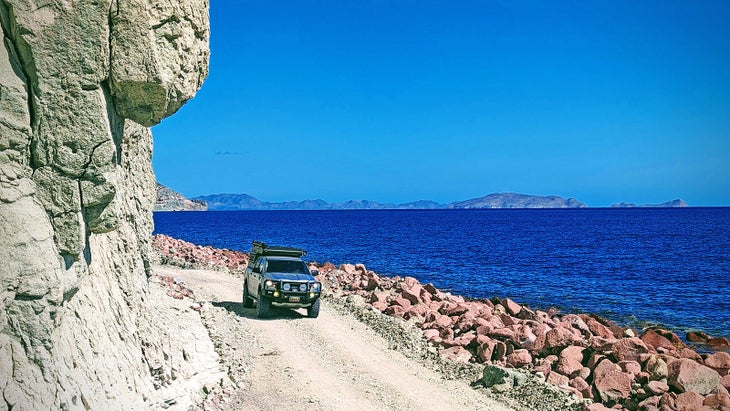
Why Your Tire Pressure Matters
Modern 4x4s have buttons that optimize systems like locking differentials and electronic traction control to optimize traction in different terrain. Some common modes might include highway, sand, mud, rocks or, if you drive a Ford Raptor, even Baja itself. The thing is, none of those modes will really set your vehicle up for those conditions unless you also set your tires to the right air pressure.
On the road, your tires should be inflated to a relatively high pressure. This allows them to support heavy loads at high speeds without overheating. But take those high pressures onto a loose surface, and they’ll struggle to find grip. In those conditions, you need to prioritize the size of your tire’s contact patch with the ground, while amplifying its ability to conform to obstacles. The flexibility this adds to the tire also drastically improves ride quality, and increases puncture resistance. Different pressures will work best in different conditions, and when you return to the road, you need to be able to take your tires back up to those high pressures.
You’ll find recommended road pressures for your original equipment tires on a sticker in any vehicle’s driver’s door jamb. When overlanding, a good rule of thumb is go down to 25 PSI if you’re using economy tires. Running an all-terrain or greater means you can go much lower.
But, you probably see the problem here: Adjusting tire pressures can be time consuming, especially if you’re running oversize rubber. And this is why I’ve put a lot of time and effort into optimizing my setup for speed. That big CO2 tank isn’t just the fastest inflation method out there, but I’ve mounted it outside my truck where nothing gets in the way of using it.
But, that is so fast that my tires aren’t actually able to take full advantage of its pressurized gas. That’s because the valve cores can only flow so much air at once. I get around that restriction by employing that flows the air into two tires at once. As a bonus, that also automatically balances pressures across axles, which can deliver significant benefits to handling when running those big tires, and it doubles as an air-down tool, again reducing the time that chore takes since it dumps air from two tires at once.
All that speed transforms what would otherwise be a time consuming hassle into a task that doesn’t take all that much longer than pushing one of those buttons. Which means not only that I’m able to take advantage of correct tire pressures more often, but in so doing, am also achieving much more effective “modes,” than any button will ever give you by itself.
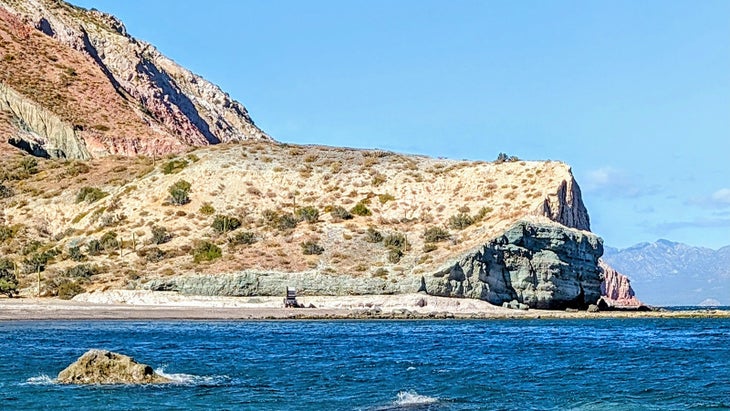
Overlanding Capability Creates Better Campsites
On our way back north, we were looking at people in Sprinters and similar camping in terrible, exposed locations, and shaking our heads in disbelief at everything they were missing. Vans, crossovers, and other vehicles designed with only pavement in mind just weren’t able to get far enough off the highway to really take advantage of Mexico’s hard-to-reach places. And, in failing to get very far, those campers were also visibly scared of crime, buttoning themselves up inside their metal cocoons as dusk fell in order to give themselves an illusion of safety.
Us? We never once camped even in view of another vehicle, and were able to visit places far beyond the ability of anyone not as well-equipped to reach us. That didn’t just create safety, it also gave us the kind of experiences that are worth driving thousands of miles to find.


